In Jamaica, farmers find effective ways to contend with a changing climate
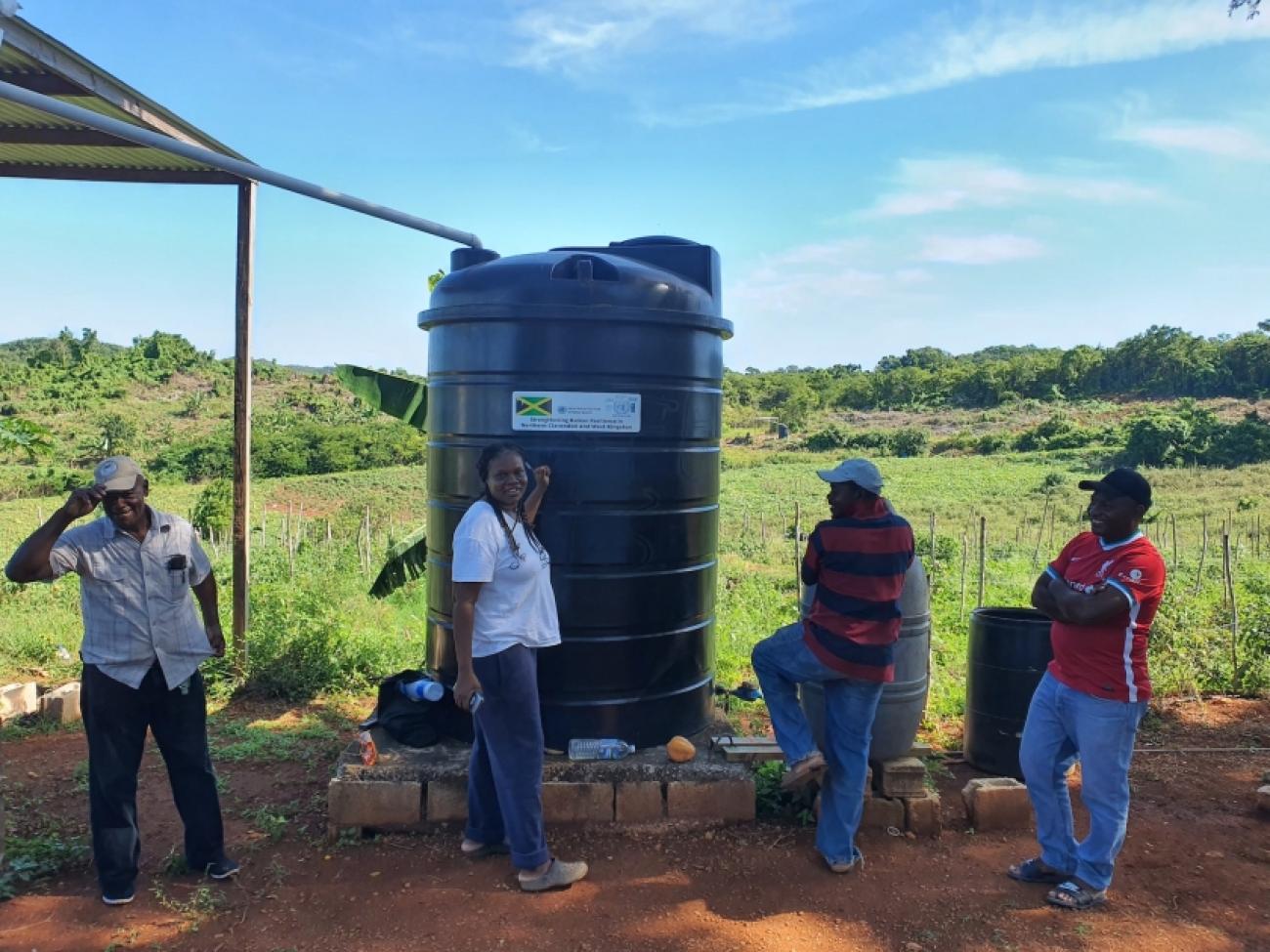
It’s 9 am and the rural district of Mount Airy in central Jamaica is already sweltering. As cars trundle along the region’s unpaved roads, chocolate-brown dust clouds burst from behind their back wheels.
It is here, at 50 kilometers west of Kingston and 500 meters above sea level, that the Mount Airy Farmers group are having a morning meeting.
There are around two dozen people and they all say the same thing; they’re struggling to keep their plots productive amid dwindling rainfall, a byproduct of climate change.
“The weather here’s a lot drier for longer these days,” says Althea Spencer, the treasurer of the Mount Airy Farmers group, which is based in Northern Clarendon. “If you don’t have water, it makes no sense to plant seeds because they will just die.”
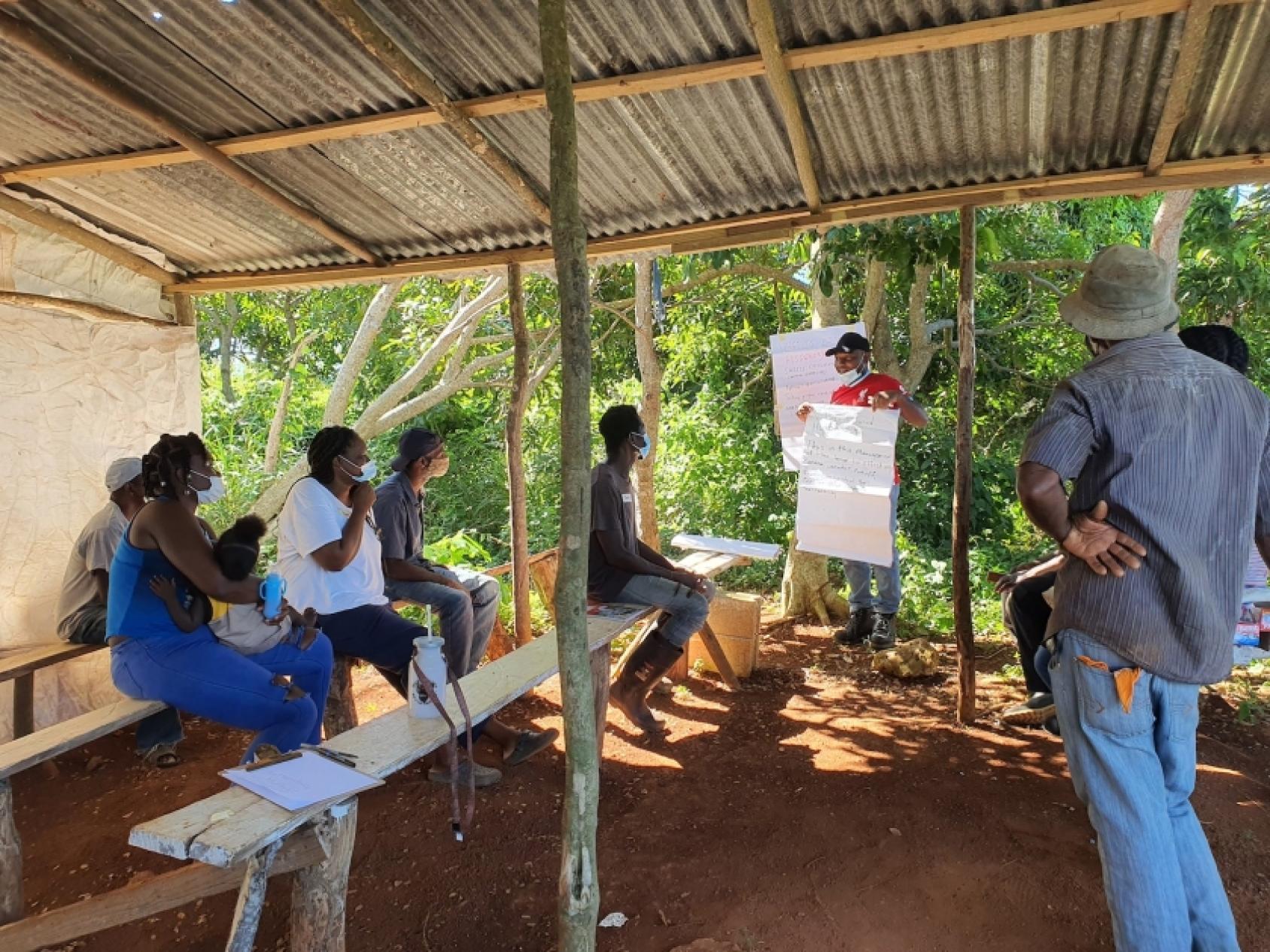
The farmers though have recently gotten some help in their search for water. Just meters from where they are gathered stands a two-store shed with a drainpipe on the roof that funnels rainwater into a tall, black tank. It is one of more than two dozen reservoirs dotted across these mountains.
The large, black tanks, which appear across the hilltops like turrets, catch and store rainfall, allowing the farmers to use it evenly through a drip irrigation system. This reduces the emerging threat of longer and more intense dry spells.
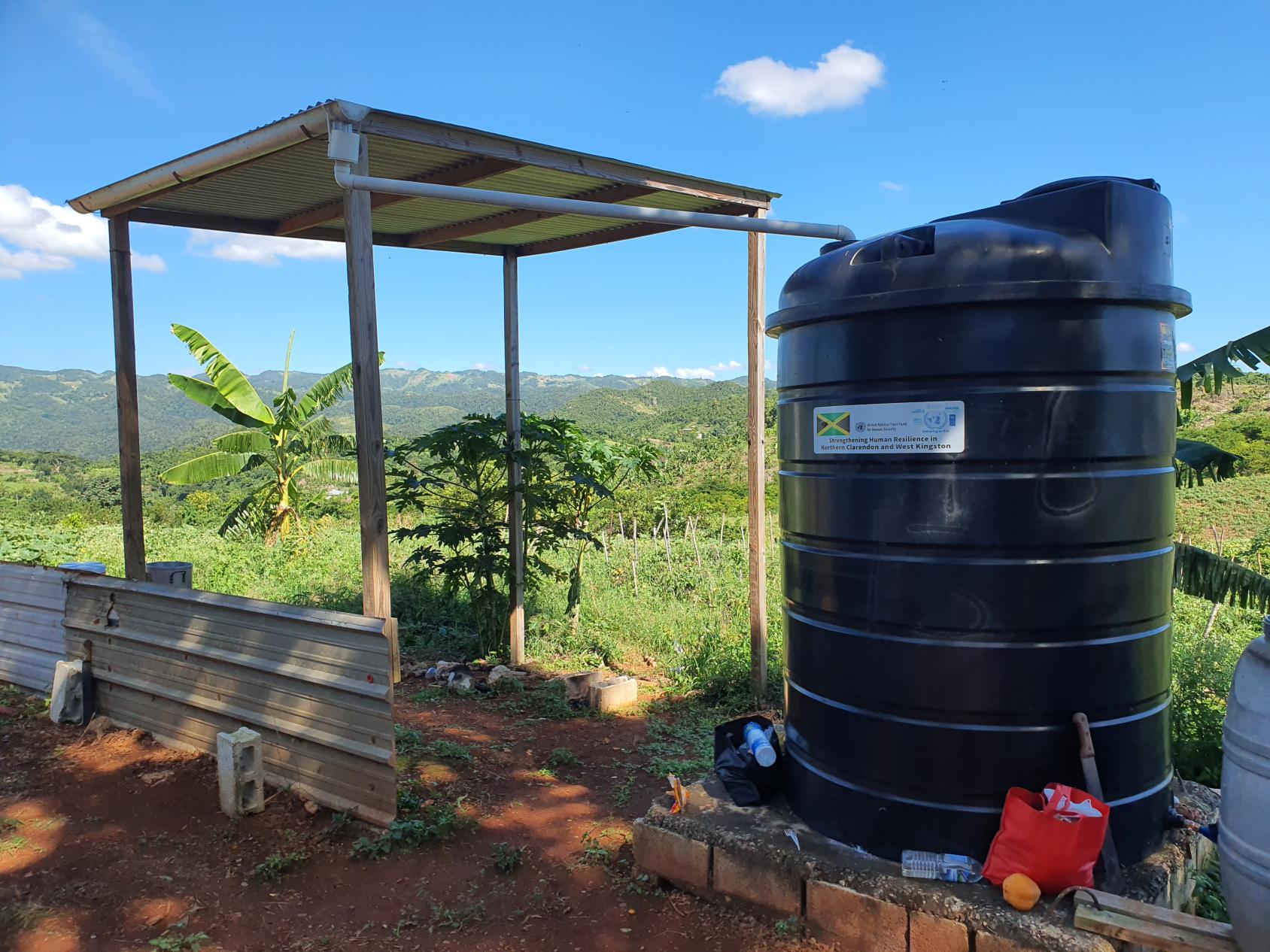
These water harvesting systems are part of an UN-backed programme in which the Mount Airy farmers enrolled in 2018 to build their resilience in the face of climate change, poverty, water insecurity and other threats.
It is regarded as the first joint programme of the United Nations in Jamaica, combining the resources of different UN agencies, including UNEP, UNDP, FAO, PAHO/WHO and UN Women.
The new irrigation system also frees farmers from watering their crops by hand. “Before we got the new system, you had to predict rainfall to put seedlings in,” says Althea, a rollerball pen tucked neatly into her hair and her feet shifting on the sunbaked earth. “It feels pretty good. It allows me more time to do housework, keep up with my farm records, and I have time to go down to the market.”
Alongside the tanks sit drums which mix fertilizer with water and spread it evenly among the crops, saving the farmers valuable time. The dissolvable fertilizer is also cheaper than standard fertilizers.
On top of that, the irrigation system improves yields. Althea now grows and sells more sweet potatoes, peppers and tomatoes than ever before.
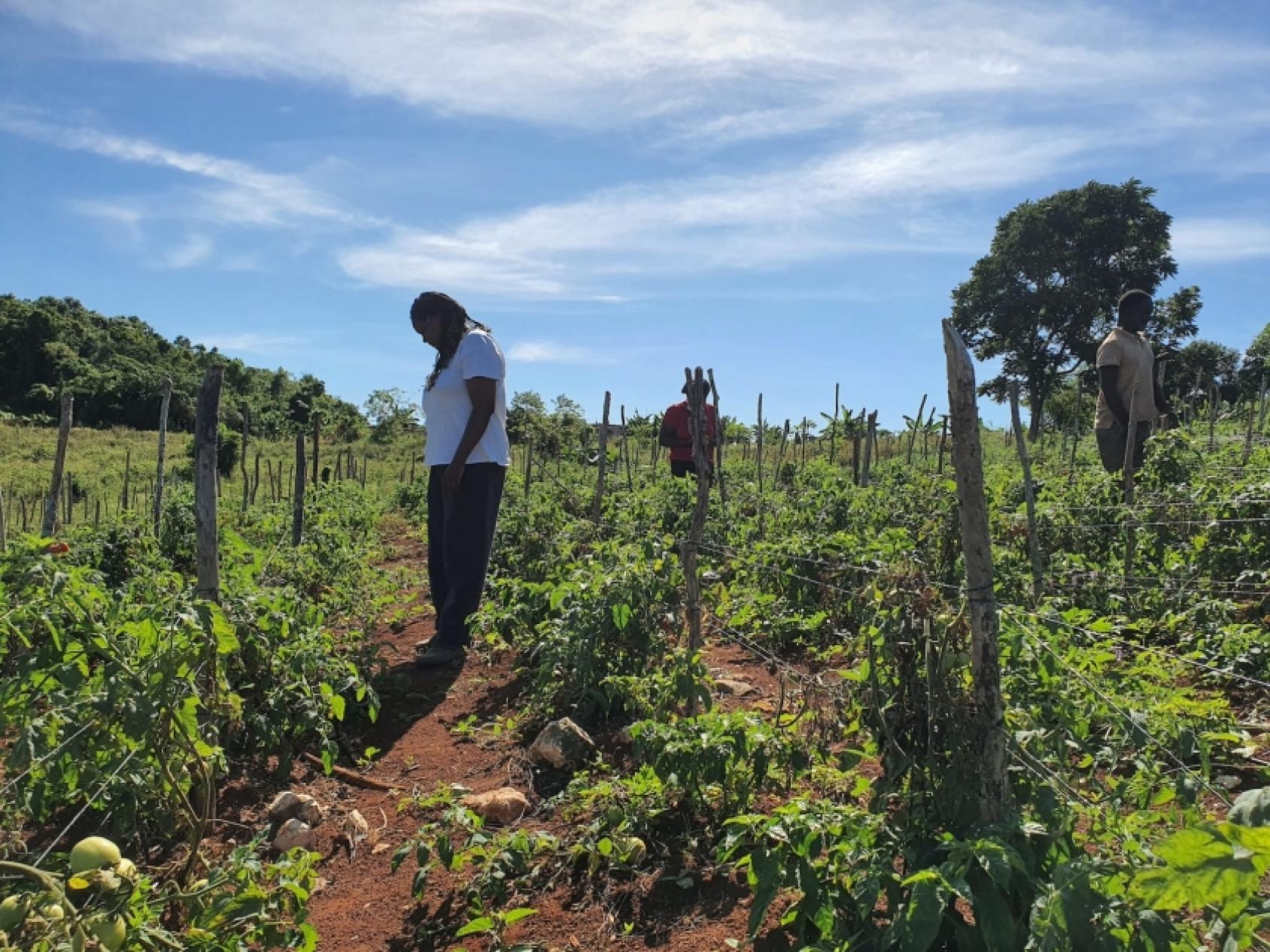
Coupled with the water tanks, the programme has also prioritized education. Seminars are run by the Rural Agricultural Development Authority, a government agency, which aims to broaden the farmer’s knowledge and skills.
Although it is not unusual for women to farm these lands, Althea speaks about how the trainings have helped to empower the female members of the group by coming together. “To me, the learnings and the trainings bond us ladies together,” she says.
A lifetime in the fields
Back at the gathering of the Mount Airy farmers, the assembled say some prayers and repeat their mantra aloud two times: “We are the Mount Airy Farmers Group our motto is: All grow in fear and failure bearing fruits of confidence and success.”
Althea, who is in her 40s, is a vocal participant at the meeting and obviously well-liked.
She was born in Mount Airy and has been farming these fields most of her life. She has vivid memories of working on her father’s farm as a child. Unable to afford to pay anyone else, he often pulled her out of school to sow and reap the fields.
That's a common refrain among many who grew up in Mount Airy – and one the new UN programme is aiming to change.
“If my father had this harvesting system, would I have gone to school more?”, Althea asks herself. “Yes, probably. But even then, he was always working with us. So, I’m sure he’d find something for us to do,” she says laughing.
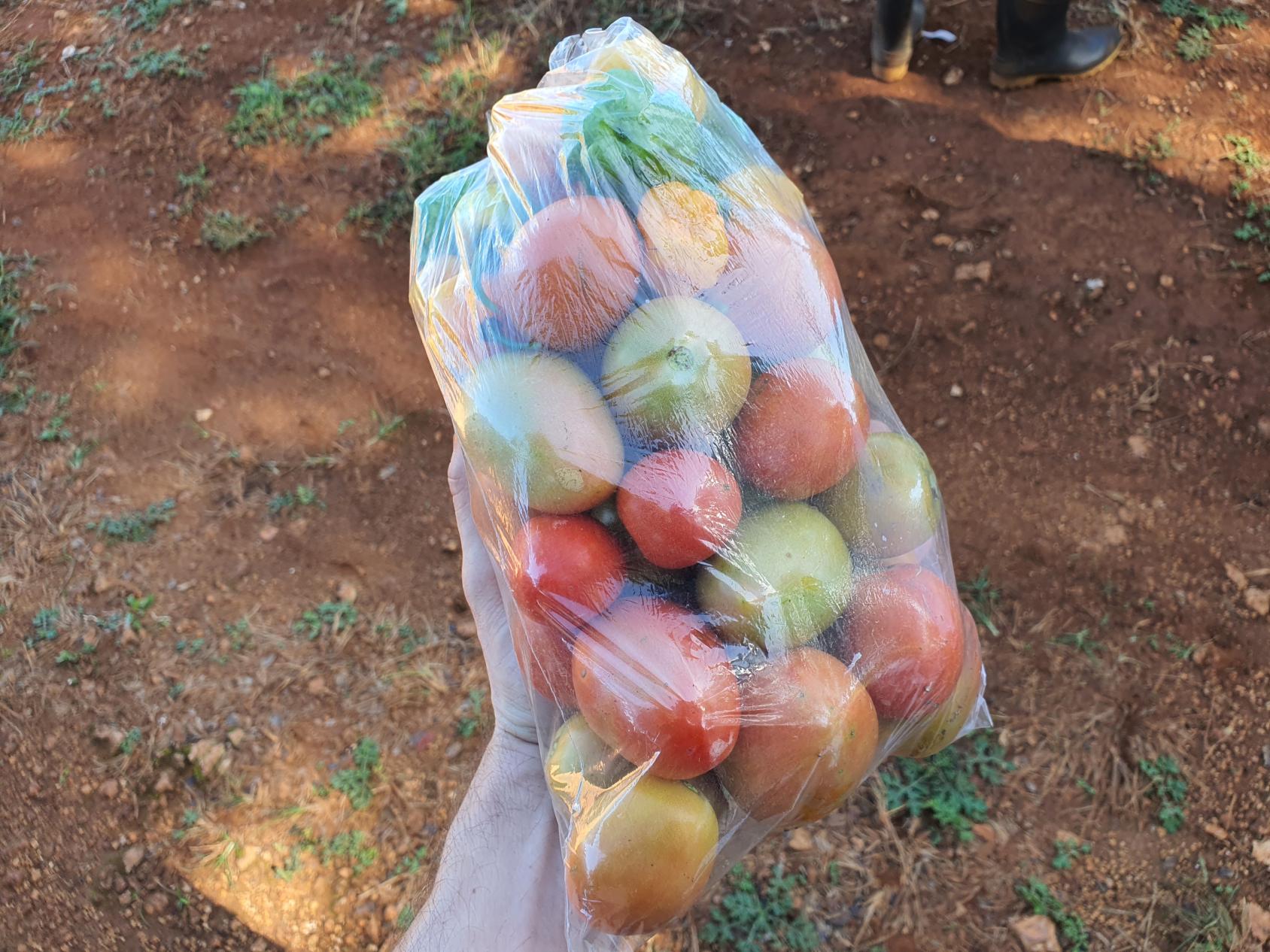
Althea welcomes the introduction of the water tanks. However, she says current rainfall patterns mean water sometimes still runs out. “If you don’t manage your water properly, one will run out before you get anywhere,” she says ominously.
Her success story shows that contending with a changing climate requires joint efforts and continued investment for years to come.
"This partnership among the UN and with communities is exactly the type of activity needed to address the day-to-day and practical impacts of climate change,” says Vincent Sweeney, Head of the Caribbean Sub-Regional Office at the United Nations Environment Programme (UNEP). “As we look beyond the Glasgow Climate Change Conference, it is vital that we adapt to the new realities of a warmer planet in order to protect lives and livelihoods in Jamaica and the Caribbean.”
In fact, farmers in Jamaica, an island nation of 3 million people, are especially vulnerable to climate change. In 2020, Jamaica became the first Caribbean country to submit a tougher climate action plan to the UN because the country was at risk from more intense hurricanes, sea level rise and a drying trend across much of the island, its government stated.
The challenge is not unique to the region. Droughts, floods, and the spread of pests, the byproducts of climate change, are threatening agricultural production around the globe, says the Food and Agriculture Organization (FAO).
Small-hold farmers, who work more than 80 per cent of the world’s farms, will need support to remain resilient in the face of climate change. UNEP’s 2021 Adaptation Gap Report called for an urgent increase in financing for climate adaptation.
About the Strengthening Human Resilience Programme: The Strengthening Human Resilience Programme in Northern Clarendon and West Kingston has been a multiyear United Nations Joint Programme funded by the UN’s Human Security Trust Fund. In collaboration with the Government of Jamaica, the programme has been jointly implemented by five UN Agencies UNDP, FAO, UNEP, PAHO/WHO and UN Women. The programme was created to enhance the human resilience of the local communities while seeking to mainstream the human security approach in development strategies and support improvement in the policy and regulatory framework in water resources management.
This is an adapted version of a story originally published on UNEP’s website and written by Thomas Gordon-Martin, Caribbean Sub-Regional Office at United Nations Environment Programme (UNEP). Edited by the UN Development Coordination Office.
For more information about the United Nations' work in Jamaica, please visit: Jamaica.un.org.













